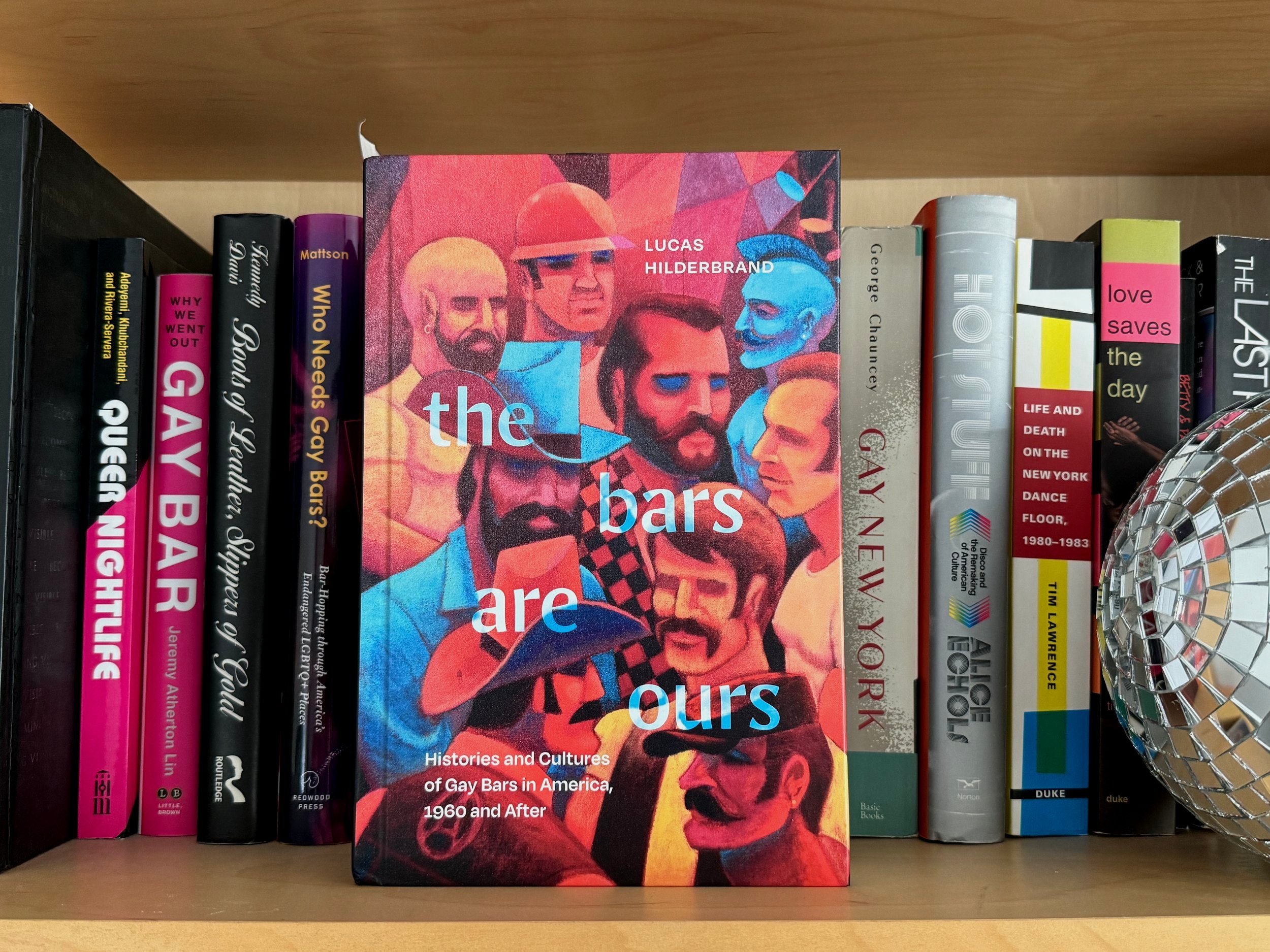
The Bars Are Ours: Histories and Cultures of Gay Bars in America, 1960 and After
About the book
Gay bars have operated as the most visible institutions of the LGBTQ+ community in the United States for the better part of a century, from before gay liberation until after their assumed obsolescence. In The Bars Are Ours Lucas Hilderbrand offers a panoramic history of gay bars, showing how they served as the medium for queer communities, politics, and cultures. Hilderbrand cruises from leather in Chicago and drag in Kansas City to activism against gentrification in Boston and racial discrimination in Atlanta; from New York City’s bathhouses, sex clubs, and discos and Houston’s legendary bar Mary’s to the alternative scenes that reimagined queer nightlife in San Francisco and Latinx venues in Los Angeles. The Bars Are Ours explores these local sites—with additional stops in Denver, Detroit, Seattle, Philadelphia, Minneapolis, and Orlando, as well as Wisconsin, Pennsylvania, and Texas—to demonstrate the intoxicating, even world-making roles that bars have played in queer public life across the country.
Published by Duke University Press, November 21, 2023
Reviews
One of the Best Books of 2023. “Hilderbrand visits gay and lesbian bars across the United States, in large cities and in small towns, as he offers readers one of the most comprehensive views of their history, significance, and influence on queer communities nationwide. This well researched book features engaging prose, as well as photographs and archival posters in every chapter. This is not just a book that deserves attention; it is a beautiful tribute to LGBTQIA+ nightlife.” — Library Journal
“ a stunning new work of research. … One thing that stands out about the book is how howlingly funny some of the passages are, and this makes what could otherwise be a dry academic text both enchanting and engaging. … The book leaves the reader feeling that the era of gay bars is not over and they will evolve to meet the needs of our diverse communities in the future.” —Michael Flanagan, Bay Area Reporter
“The Bars Are Ours is a joy to read. Lucas Hilderbrand is able both to insert himself into his narrative in ways that makes it come alive and at the same time to step back and analyze. The stories are so compelling! Some made me laugh; some left me teary-eyed; and some offered eye-opening insights into a history that is shamefully under-told and under-appreciated.” — John D’Emilio
“Lucas Hilderbrand’s The Bars Are Ours is a true tour de force. It is a comprehensive historical study of gay bars in the United States that is at once exhaustively researched and beautifully precise. Hilderbrand demonstrates a true respect for this history and tells it in a vital new way. Clearly and elegantly written, this is a nuanced, conceptual, and moving work.” — Christina B. Hanhardt
“Hilderbrand’s writing is transportive, which bolsters his impressive research. … A powerful celebration and examination of LGBTQIA+ nightlife. This book will serve as a significant record of evolving cultural touchstones and queer communities across the country.” — starred review, Library Journal
“In his historical opus, Hilderbrand makes a comprehensive study of the history of gay bars in America from 1960 to the present day. Hilderbrand’s take on the subject doesn’t shirk from looking at the bad as well as the good. In the early days, gay bars were a seedy affair, usually operated by non-gay organized crime. Later, even as more gay people assumed ownership of the bars, many of those owners were of questionable character. But as the community evolved, so did the bars, becoming more crucial contributors to the building of a diverse, supportive, and positive community.” — Booklist
“A fascinating archival deep dive. . . . Chock-full of excerpts from local gay press rags, recent oral histories, and a treasure trove of old fliers and ads that are as sexy as they are clever and funny, the book shows how the bars reflected the queer communities they attracted—in their irreverence, activism, and spirit of warmth and safety, as well as (sometimes) their overt or implicit discrimination and bias against patrons who did not fit a certain cisgender, gay white male ideal. … [An] absorbing new book, an academic text that is actually fun and riveting to read.” — Tim Murphy, The Body
“A happy cry … The Bars Are Ours tickled the sweet spot in my nostalgia, while also being pretty clear about the ways that gay bars have historically been complicated—racist, gender-policing and often unwelcoming to people who are considered too old, insufficiently fancy or not commercially attractive. Hilderbrand is my favourite kind of smartypants—he knows an absolute ton and still manages to write interesting, vibrant prose with some of the sparkle still on it, not weighted down with jargon and internal politicking of the discipline.” — S. Bear Bergman, Xtra magazine
“sprawling, playful and rigorous” — Hari Nef, The New York Times
“a history by means of a series of in-depth case studies—a bar crawl, if you will … It is by embodying this tension between inclusion and exclusion—the bouncer’s nightly decision about who gets in and who doesn’t—that makes bars so central to understanding the many contradictions of queer culture. … The best bars are always the ones we haven’t yet been to, and maybe that’s why we keep going out.” Kevin Brazil, The Baffler
“This project is a bold and ambitious undertaking, many years in the making, and Hilderbrand nailed it.” — JD Doyle
“Author Lucas Hilderbrand's sprawling tome looks at the ways watering holes shaped modern queer identity. Traveling from New York to Los Angeles, Houston to San Francisco, and many points in-between, Hilderbrand dives deep. The results are impressive” — Out
“Fucking beautiful.” — Emily Colucci, Filthy Dreams
“a remarkable achievement and essential reading for any serious student of contemporary queer history.” — Matthew Hays, Gay & Lesbian Review
Profiles: The Body, Duke University Press blog, UCI, The Windy City Times, Sewers of Paris podcast, LGBT Senior podcast One Thing or Another, KCUR (Kansas City Public Radio)
Postscript in Gay & Lesbian Review blog
Excerpts: Club Chico (Los Angeles) in GayCities and Mable Peabody’s Beauty Parlor and Chainsaw Repair (Denton, TX) in LitHub
Book events
Montreal
Nov 4, 6-8pm: American Studies Association LGBTQ+ collective book party at L'Euguélionne (1426 Rue Beaudry)
Santa Barbara
Nov 28, UC Santa Barbara
West Hollywood
Nov 29, 7pm: Reading at Book Soup (8818 Sunset Blvd., West Hollywood)
Boston (virtual)
Nov 30, 7pm (Eastern): The History Project (virtual). Recording available on YouTube.
Fort Lauderdale (virtual)
Dec 5, 6:30pm (Eastern): Conversation with Stonewall National Museum, Archives, and Library (virtual). Register via Zoom. Or watch on YouTube.
Chicago
Dec 10, 1pm: Leather Archives & Museum Holiday Fetish Fair (6418 N Greenview Ave)
Omaha
Dec 16, 7pm: Reading at Omaha Mining Company (1715 Leavenworth St)
Kansas City
Dec 17, 2pm: Missouri Valley Sundays at Kansas City Public Library (14 W 10th St). Recording available on YouTube.
Houston
Jan 17: Rice University
Jan 18, 7pm: Reading at Phoenix Room at the Houston Eagle (611 Hyde Park Blvd)
New York
Jan 21, 3pm: Reading at Bureau of General Services—Queer Division, inside The LGBT Community Center, 208 W 13th St Room 210
San Francisco
Feb 26: San Francisco State University
Feb 27, 7pm: Reading at Fabulosa Books (489 Castro St)
Feb 28: Stanford University
Los Angeles
Mar 28, 6:30pm: ONE Archives at USC Libraries (909 W Adams Blvd)
Image gallery below: illustration outtakes that didn’t make it into the book
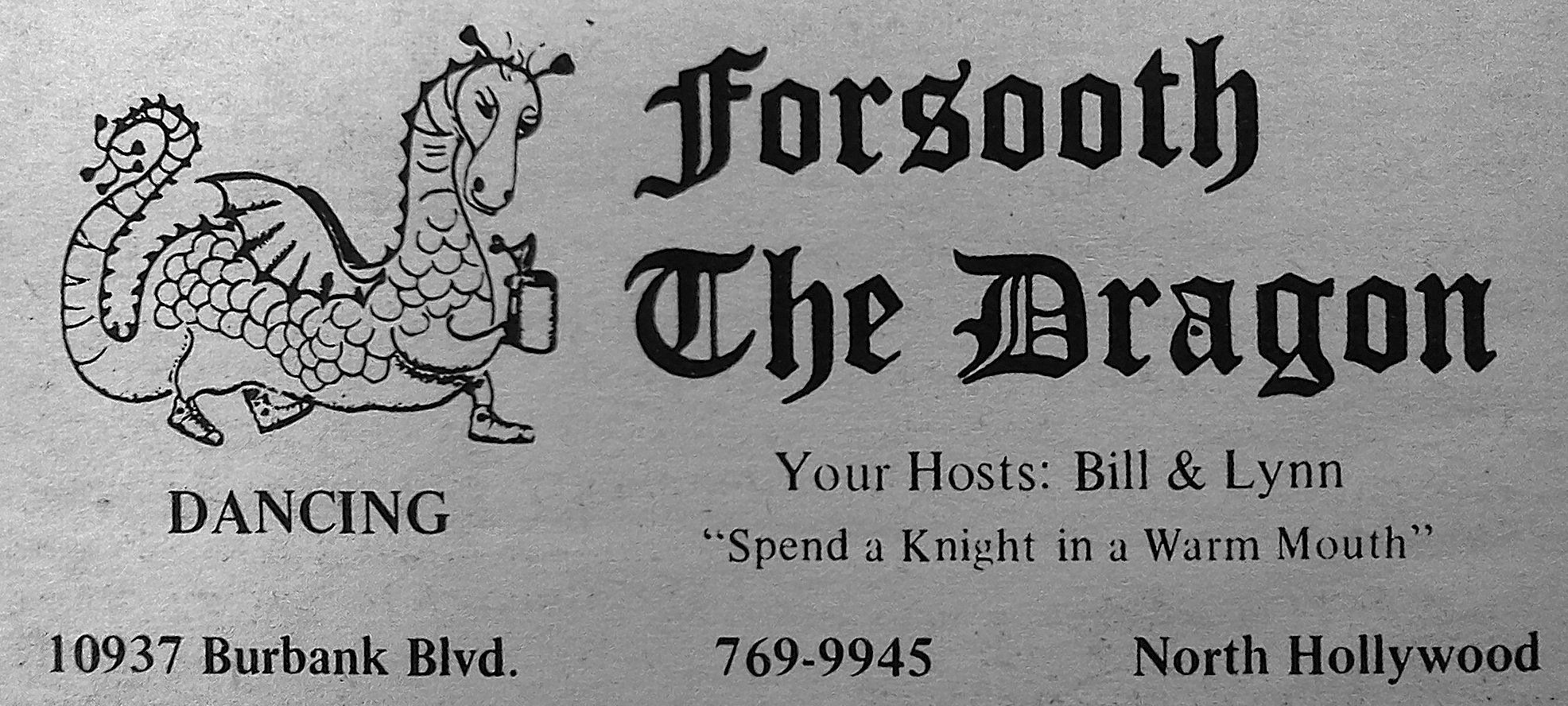
"Spend a Knight in a Warm Mouth"
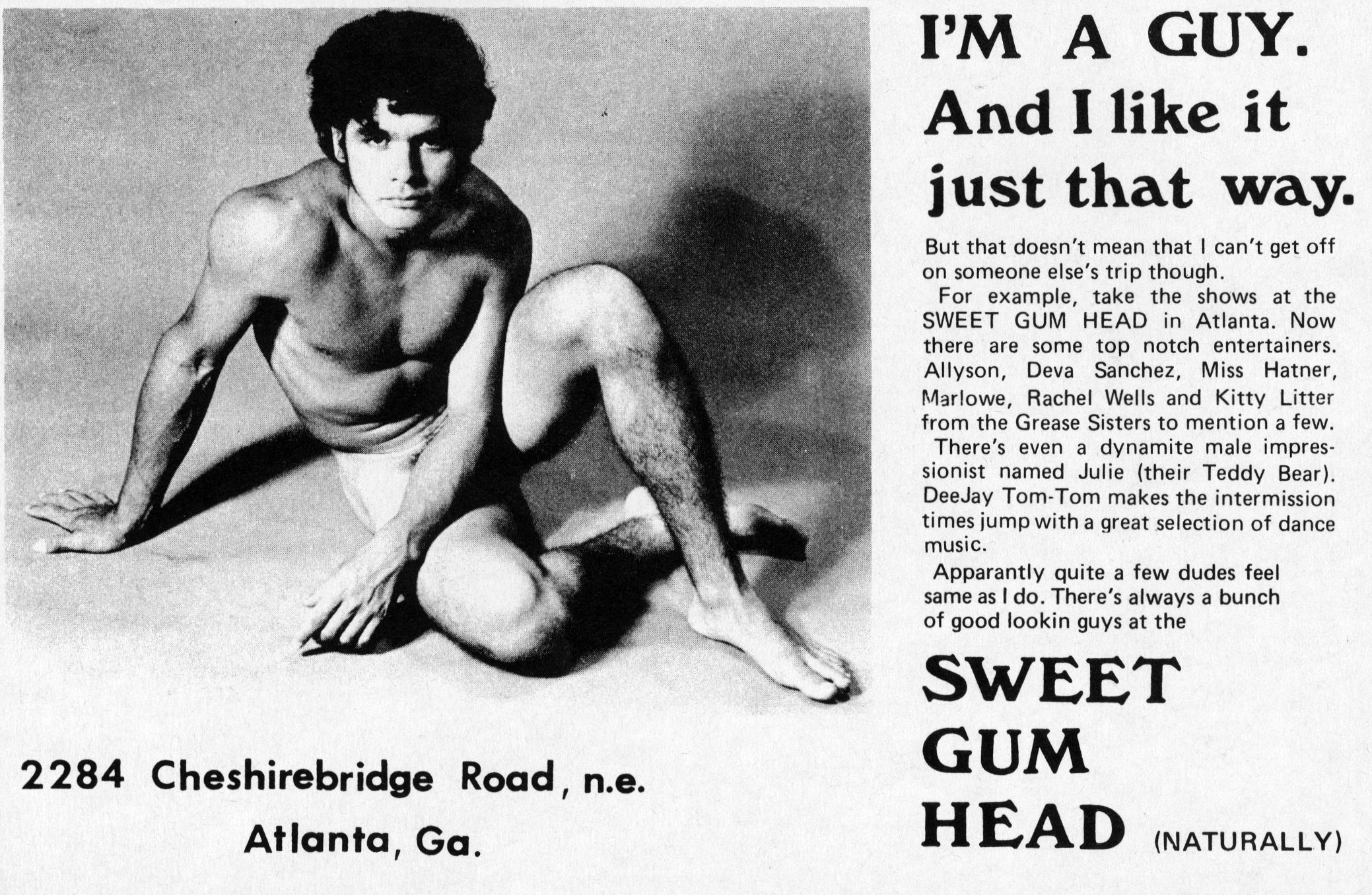
Ironically, the drag showplace of the South

Pinball machine at Fun Hog Ranch, Las Vegas. Photo by author

Painting of Judy and Liza as Madonna and Child by Darren Cathcart, as seen at Camp bar in St Paul. The painting has been lost. Photo by Brad K. Jacobson.

Trick card for Larry's in Los Angeles, 1970s

My gay mind reeled at this line-up at the Copa in Ft Lauderdale, 1983
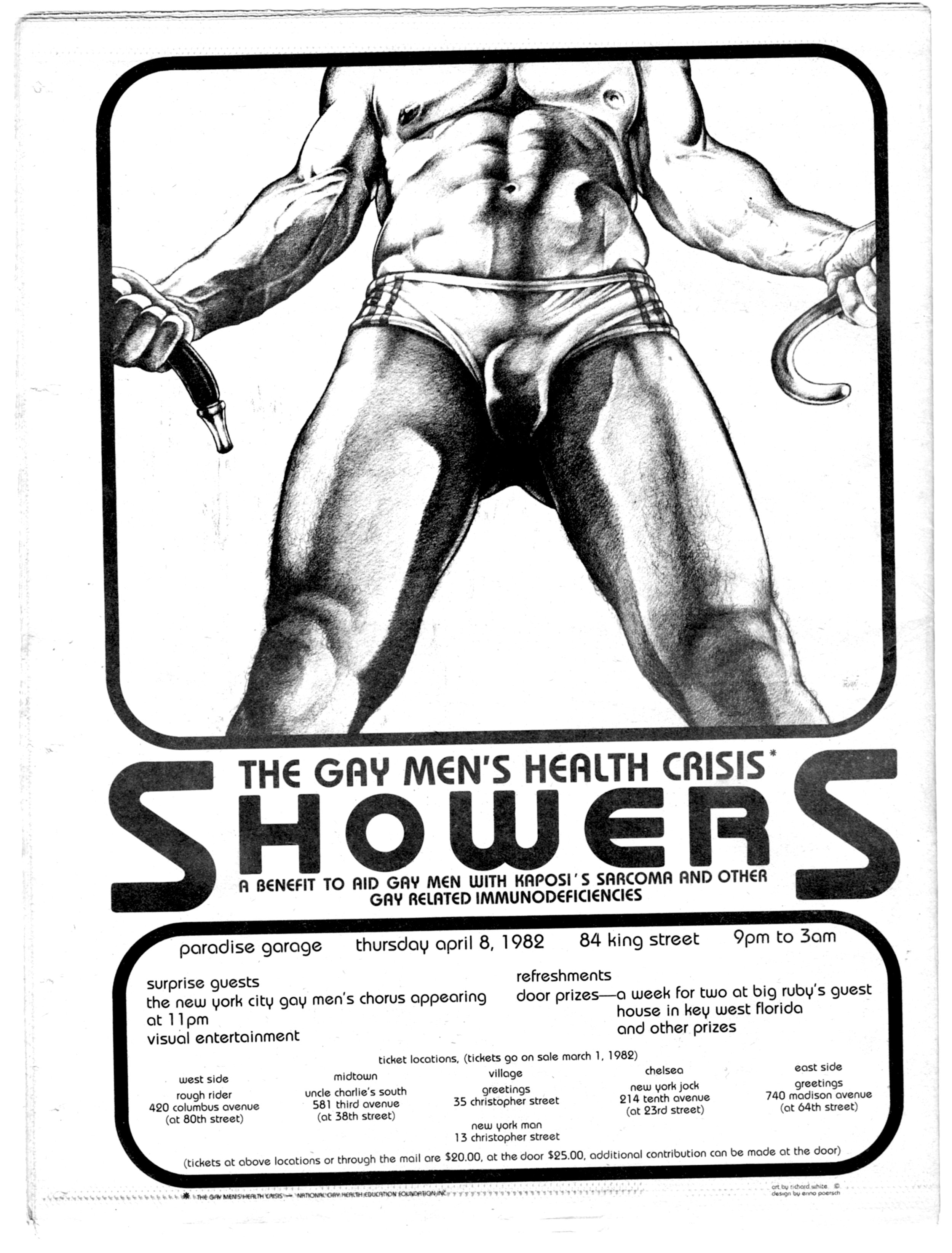
The first Gay Men's Health Crisis benefit, hosted at the Paradise Garage, 1982

Great long-form reporting on gay male social dynamics at bars: Charles Reich and James Roediger, “Beneath the Bar Facades: A Look at Why We Don’t ‘Connect’,” The Advocate, May 4, 1977, 37-41.
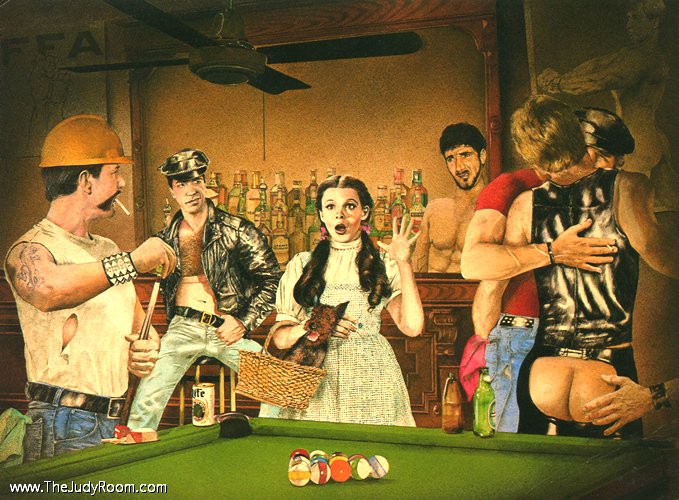
A popular postcard called "We're Not in Kansas anymore." 1990s
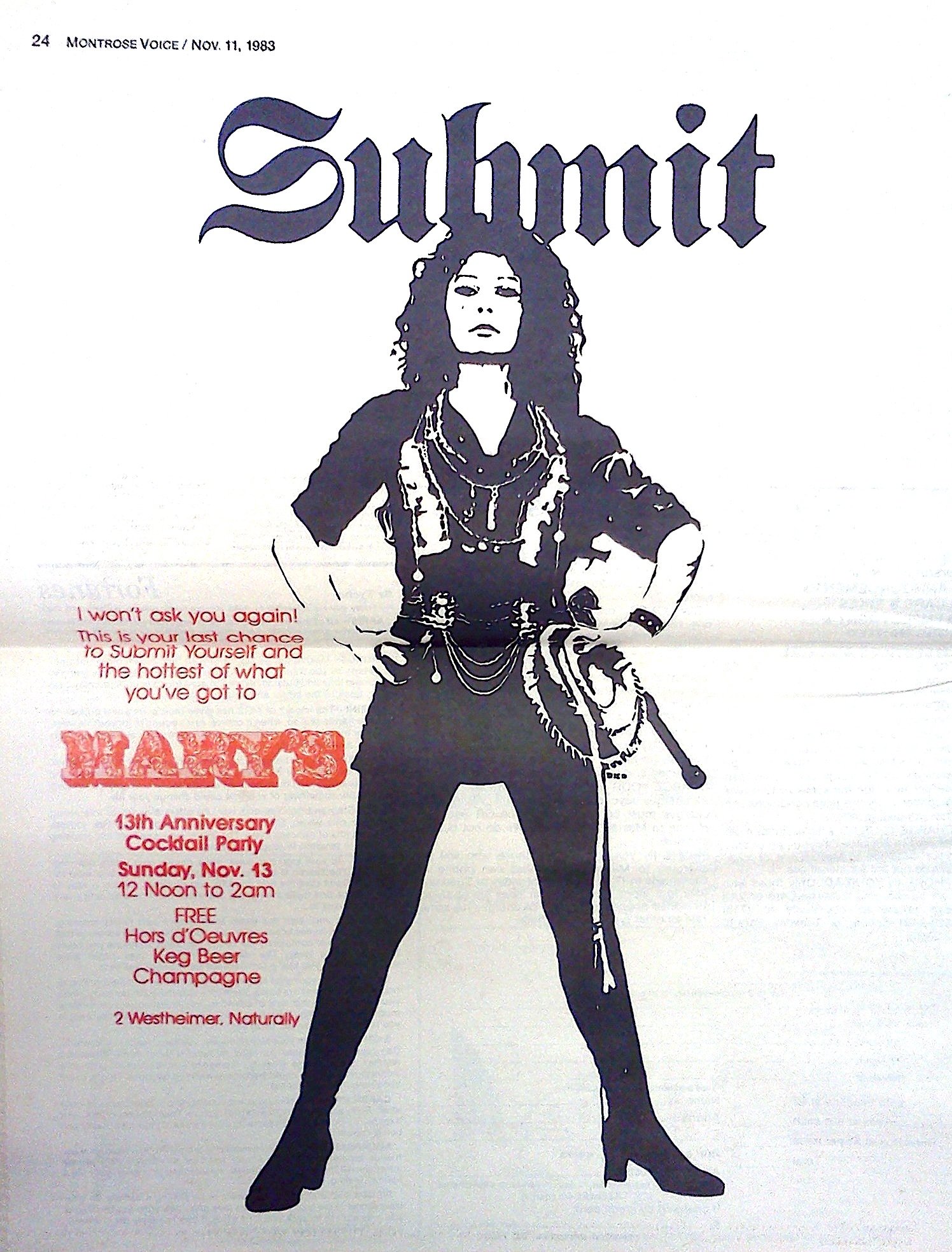
One of Mary's many iconic ads, for the gay bar institution of Houston

Gay bars sustained the gay press through advertising.
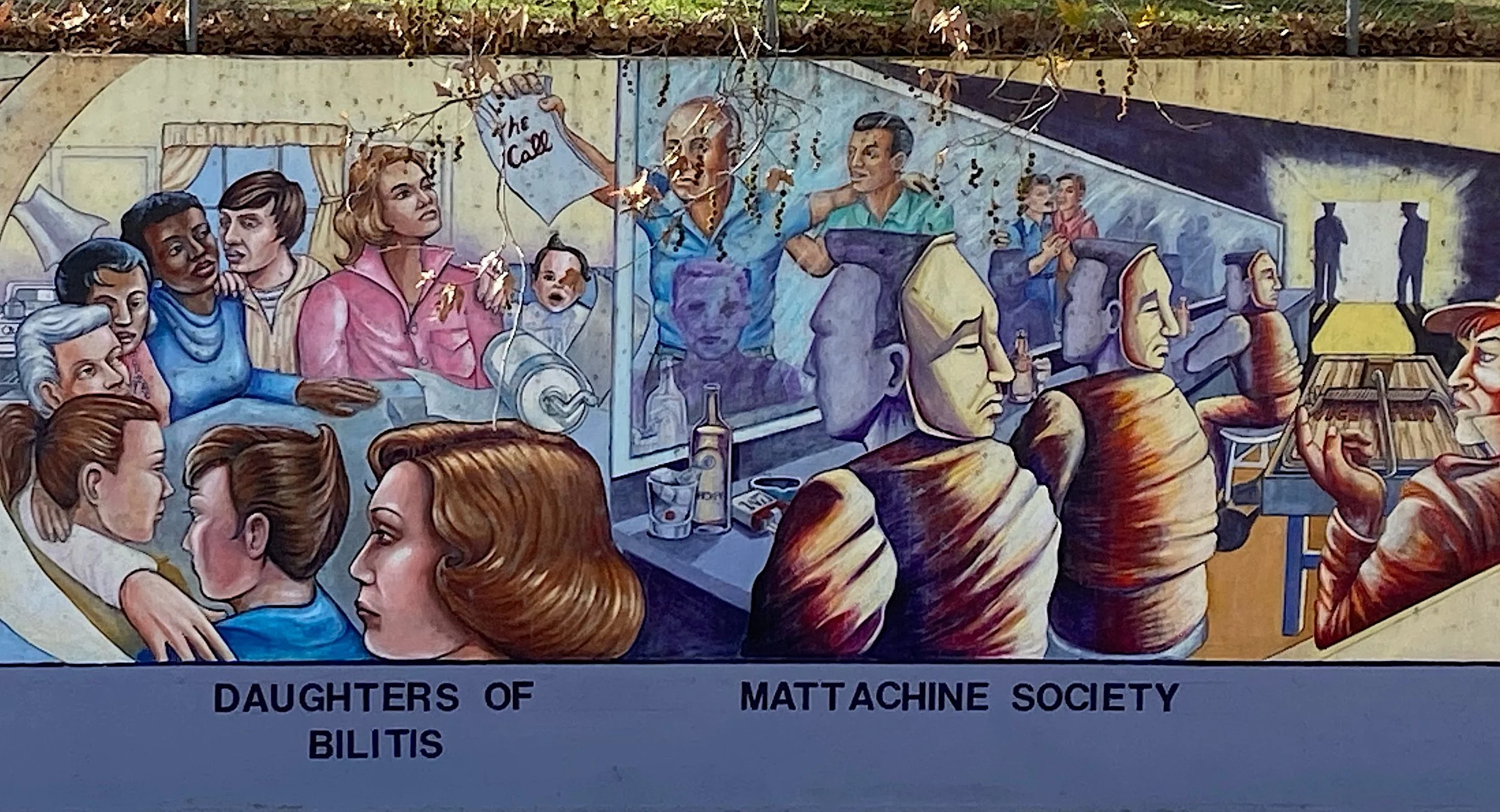
The Great Wall of Los Angeles mural by Judith Baca, 1974-84. Photo by author

Portrait of Paradise Garage DJ Larry Levan by Keith Haring for birthday party invitation. This version could not be authenticated by the Haring estate. Posted without permission.

A cover of the Spanish-language Los Angeles gay magazine De Ambiente
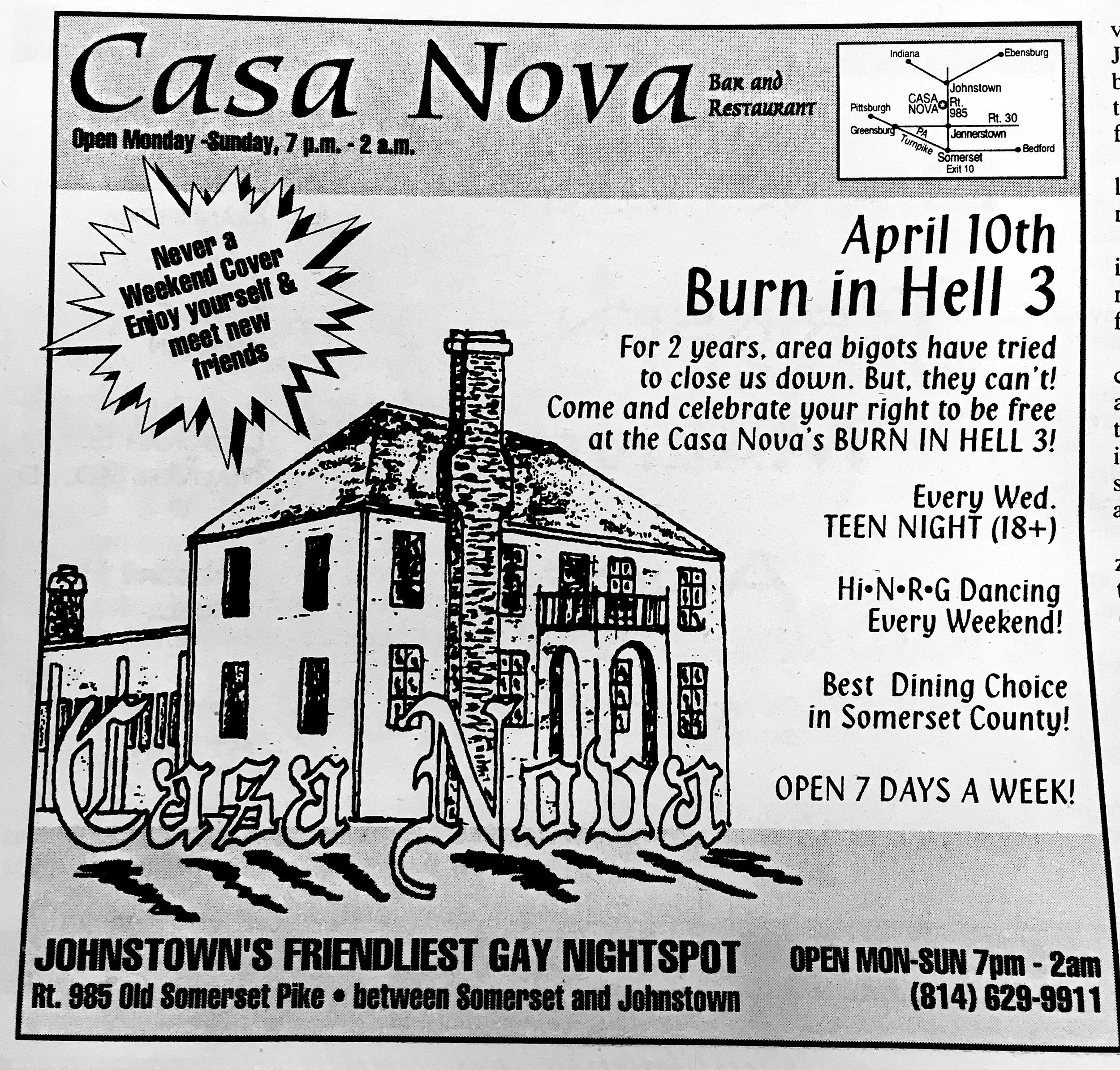
Casa Nova in Somerset County, PA was protested by Anabaptists and the KKK for years on end in the late 1990s
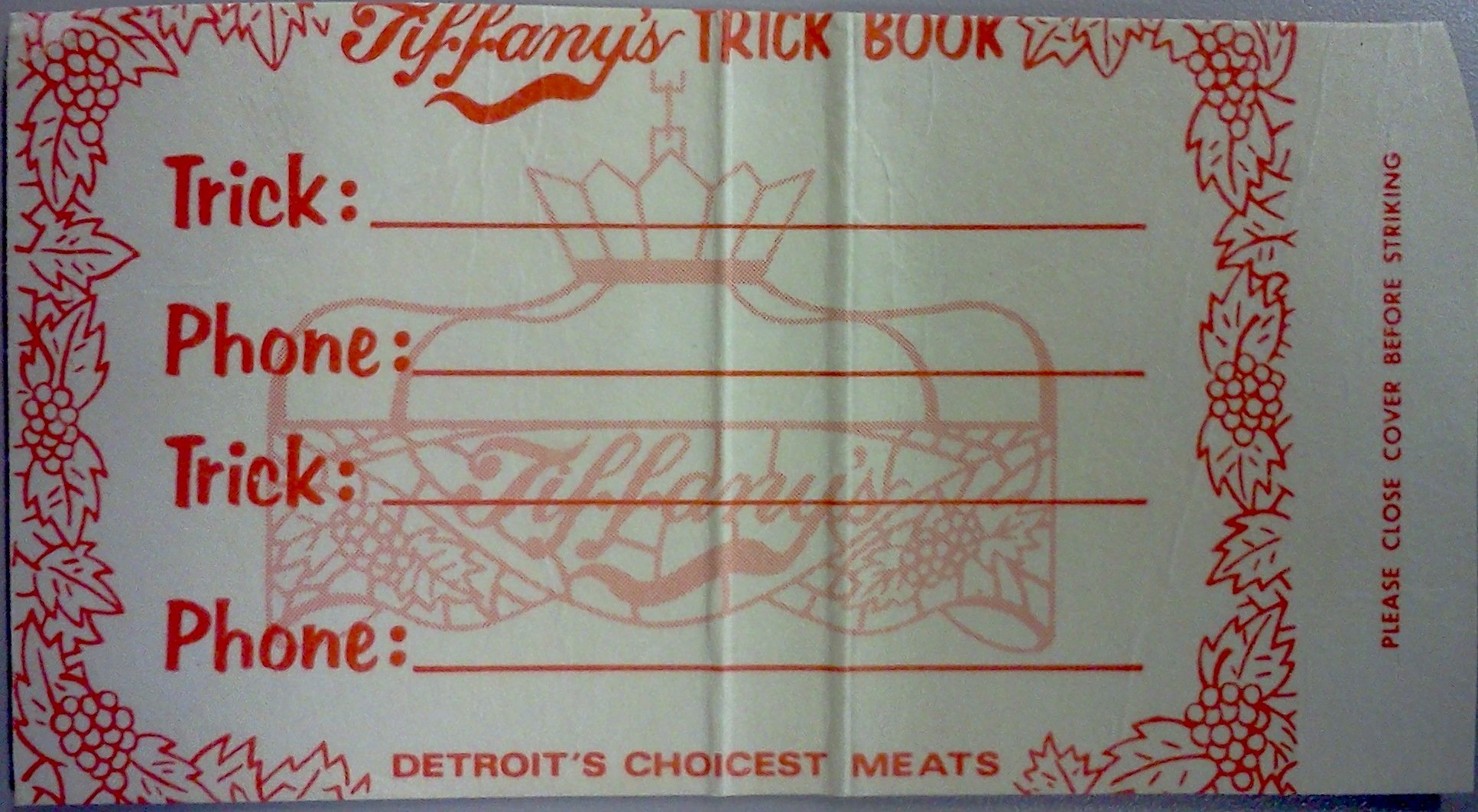
Trick card for Tiffany's in Detroit. 1970s
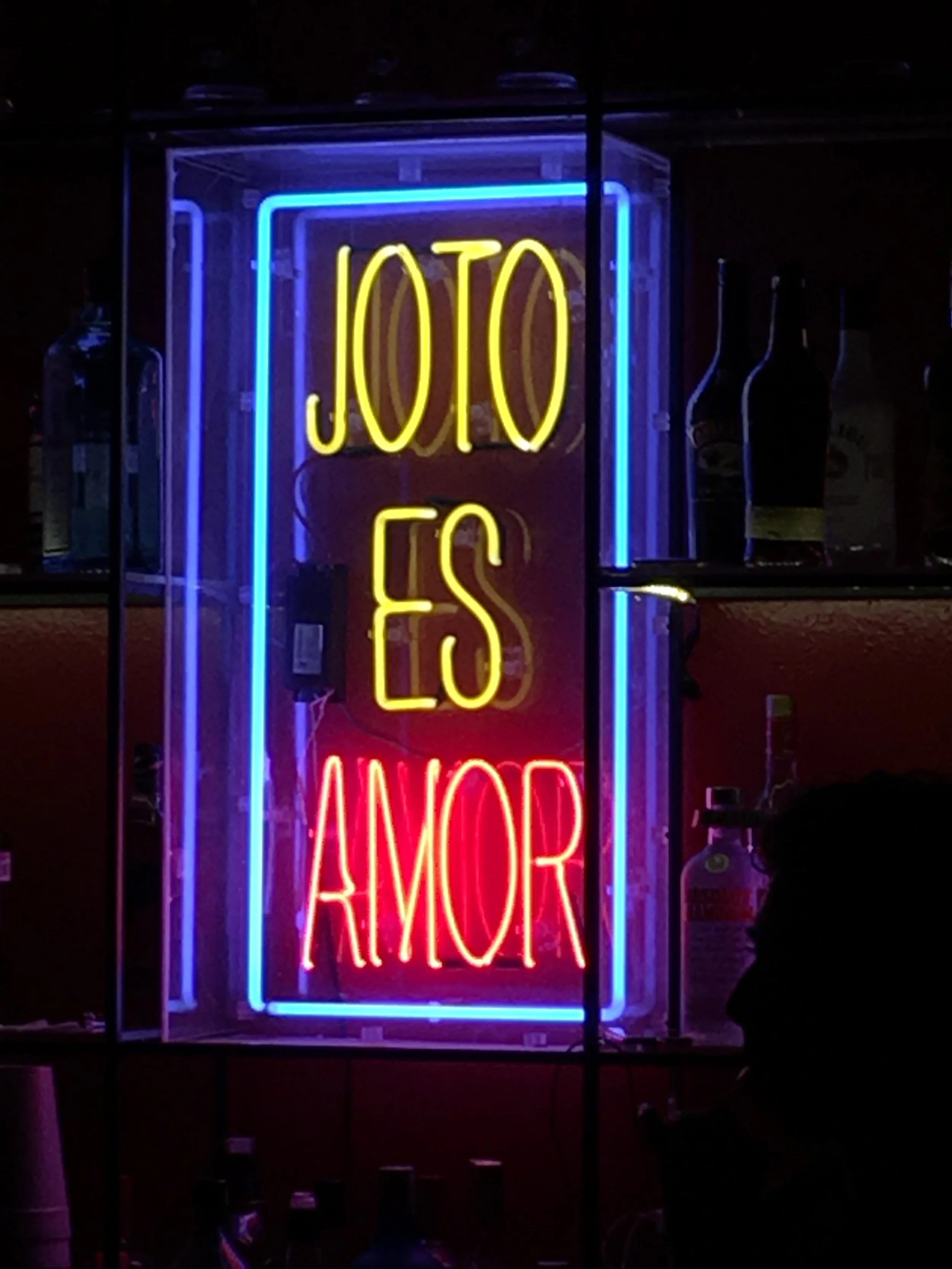
Translates as faggotry is love. Marrakech Saloon, Mexico City. Photo by author.
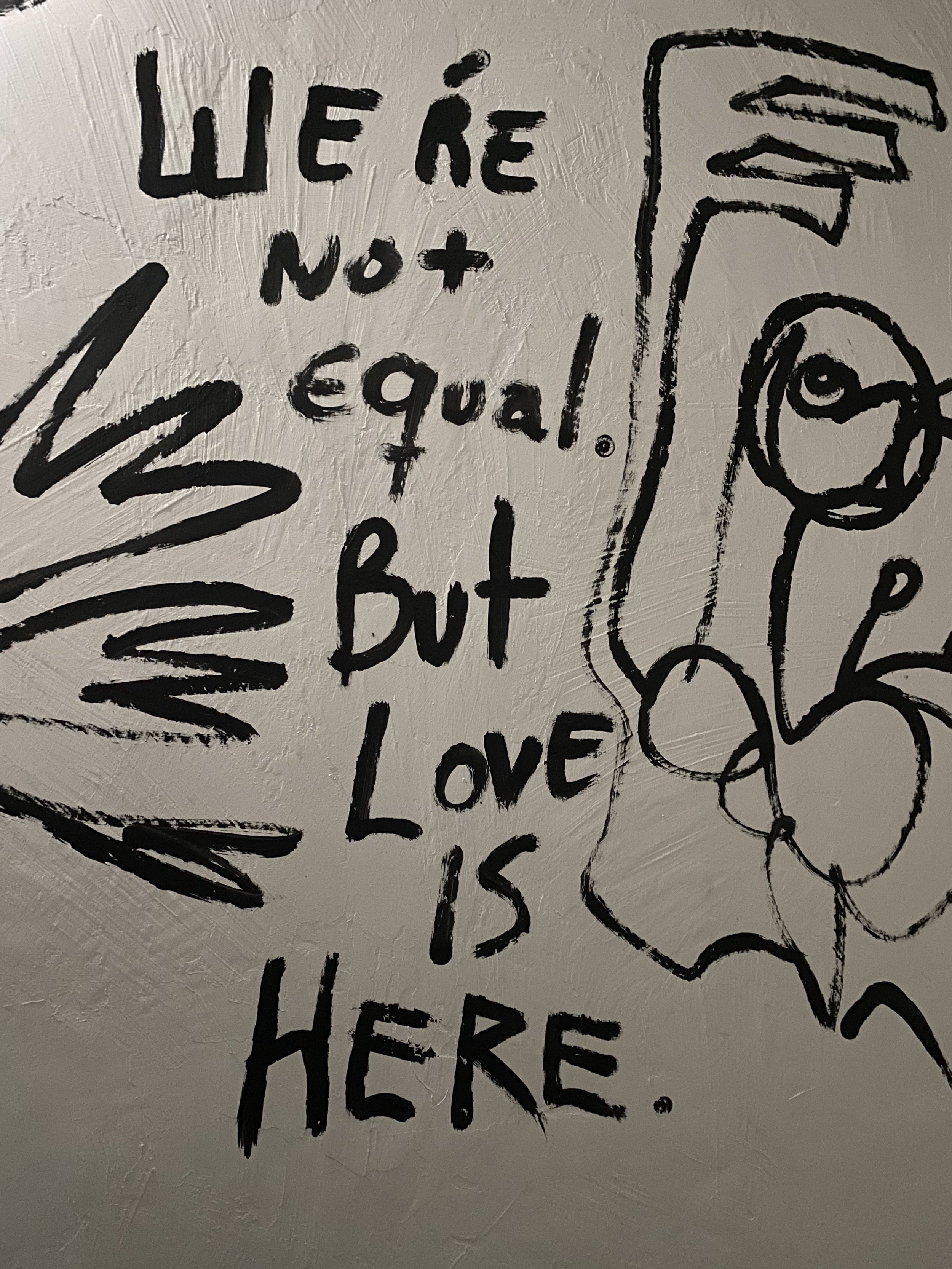
Restroom mural at SinFin Cantina, Guadalajara. Photo by author.
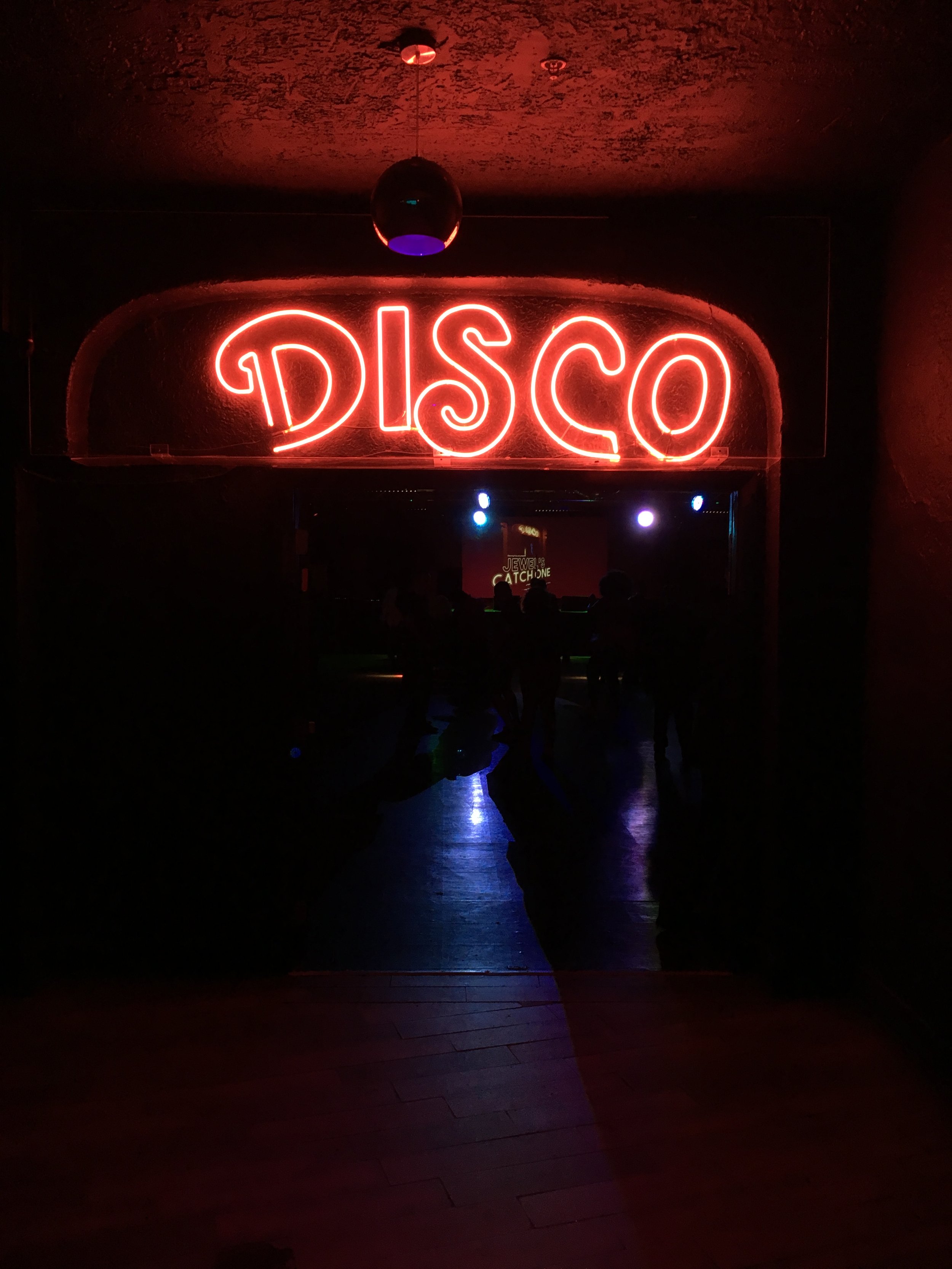
Inside Jewel's Catch One. Photo by author

The Horny Bull, "America's Finest 'Chicken' Bar," Tampa, 1971

Red Room, Houston, 1972

Knight Out, Jacksonville, 1972
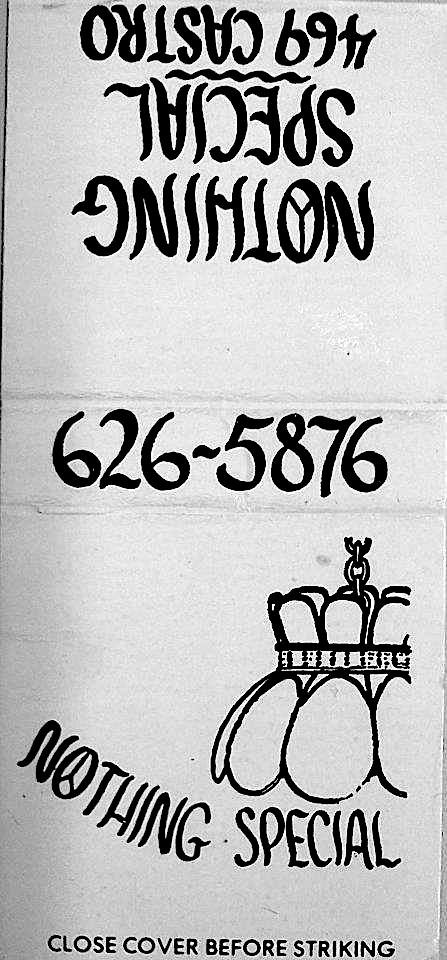
When the "Nothing" burned out in the sign, people started referring to it as "the Special" San Francisco

1979 March on Washington, sponsored by poppers

1982 Sleaze Ball at the Lost and Found, Washington DC. "Attire: as little as possible"
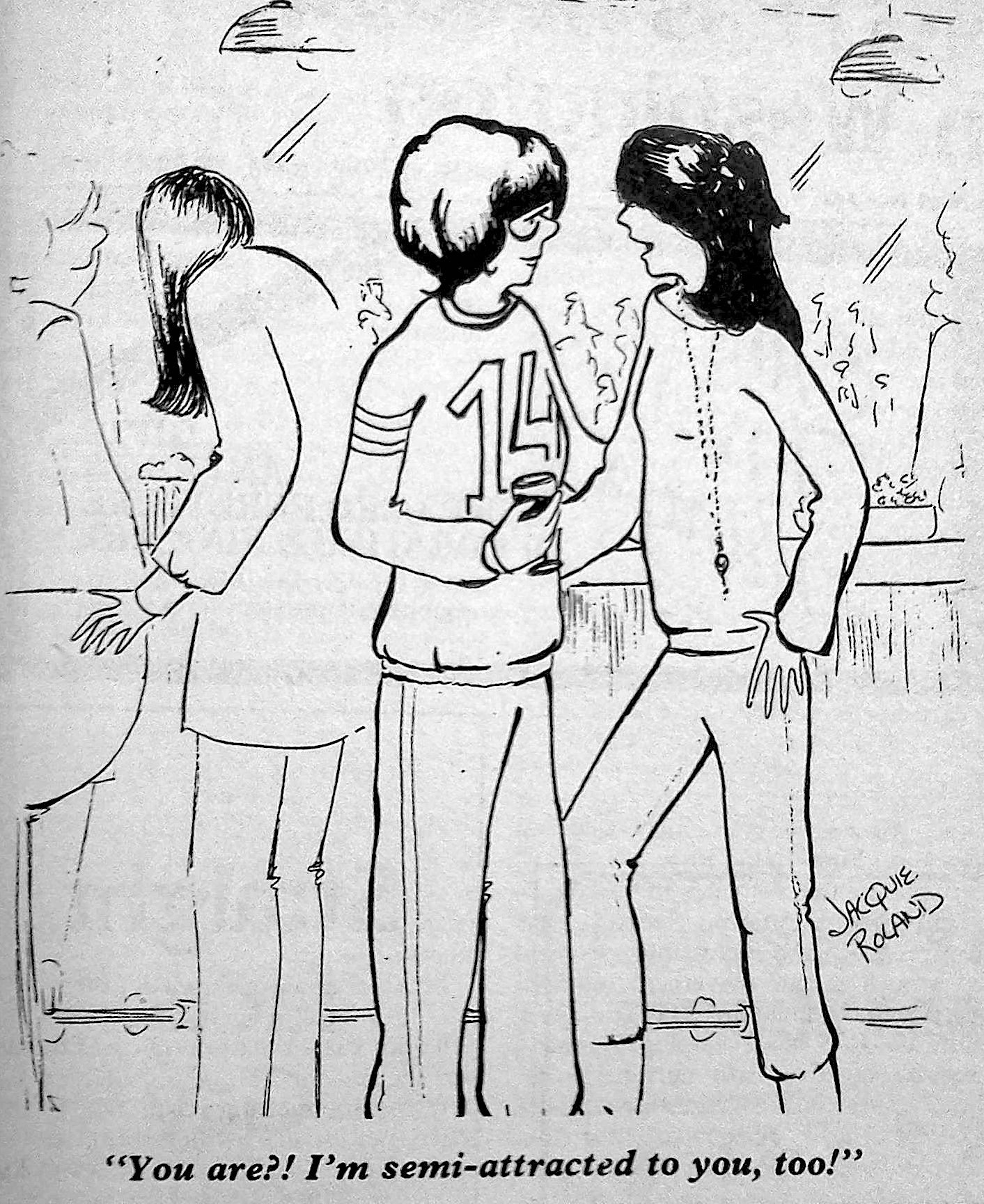
"You are? I'm semi-attracted to you, too!"

Chubby Chaser Night at the New Flight in Chicago, 1978
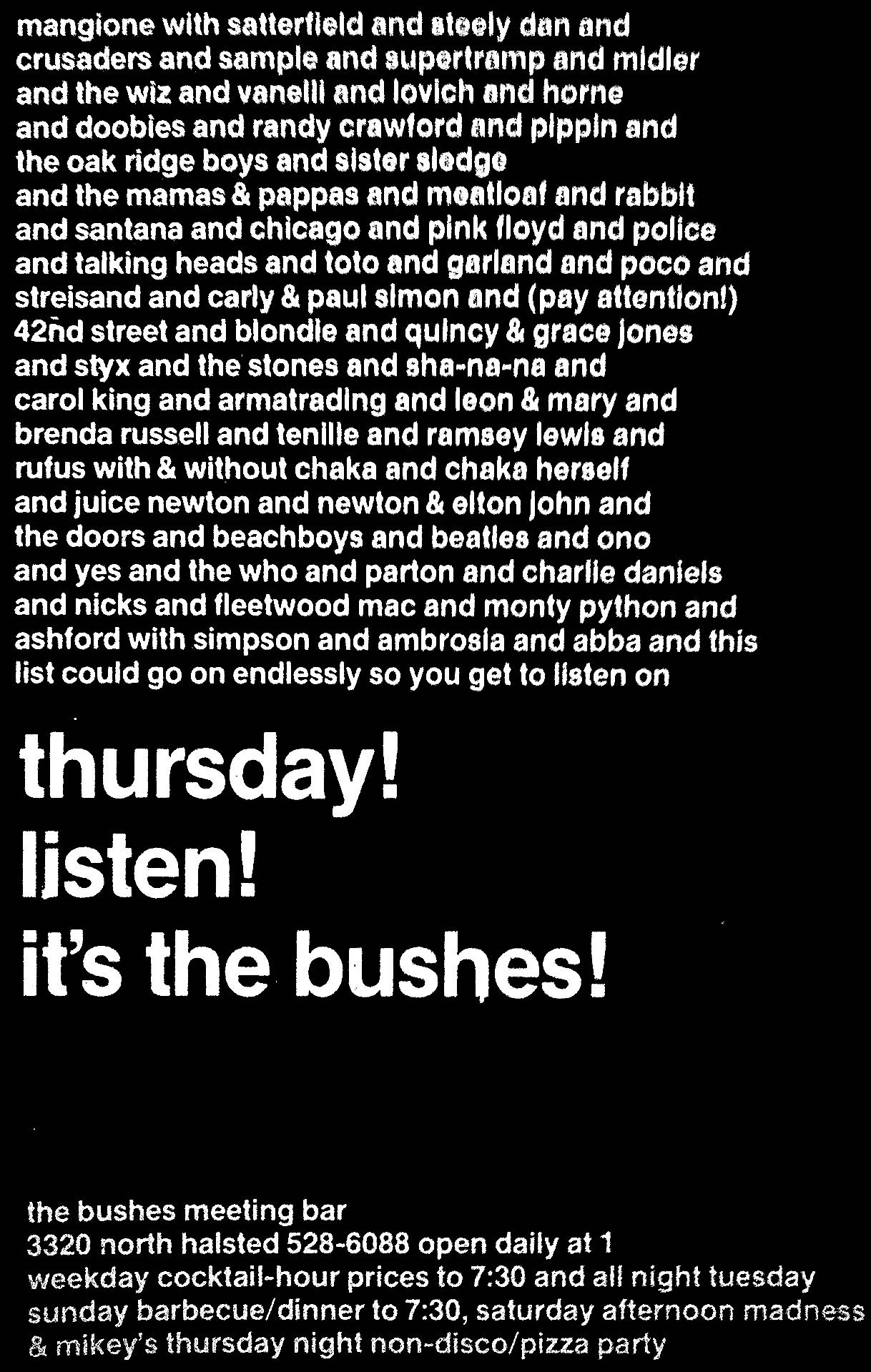
Music at The Bushes, Chicago, 1981
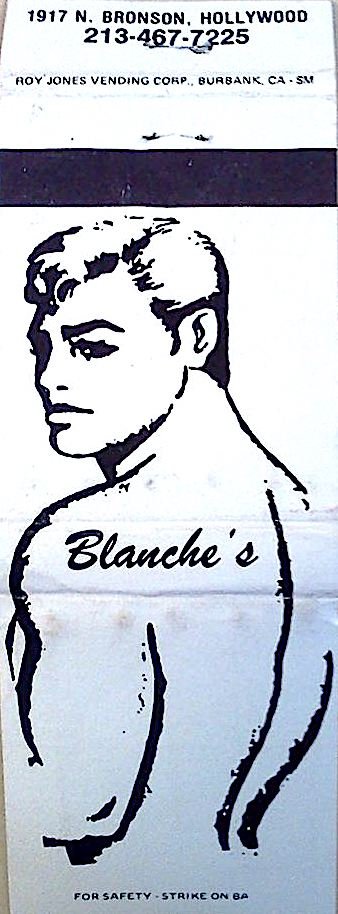
Blanche's in North Hollywood, presumably named after Blanche DuBois in A Streetcar Named Desire
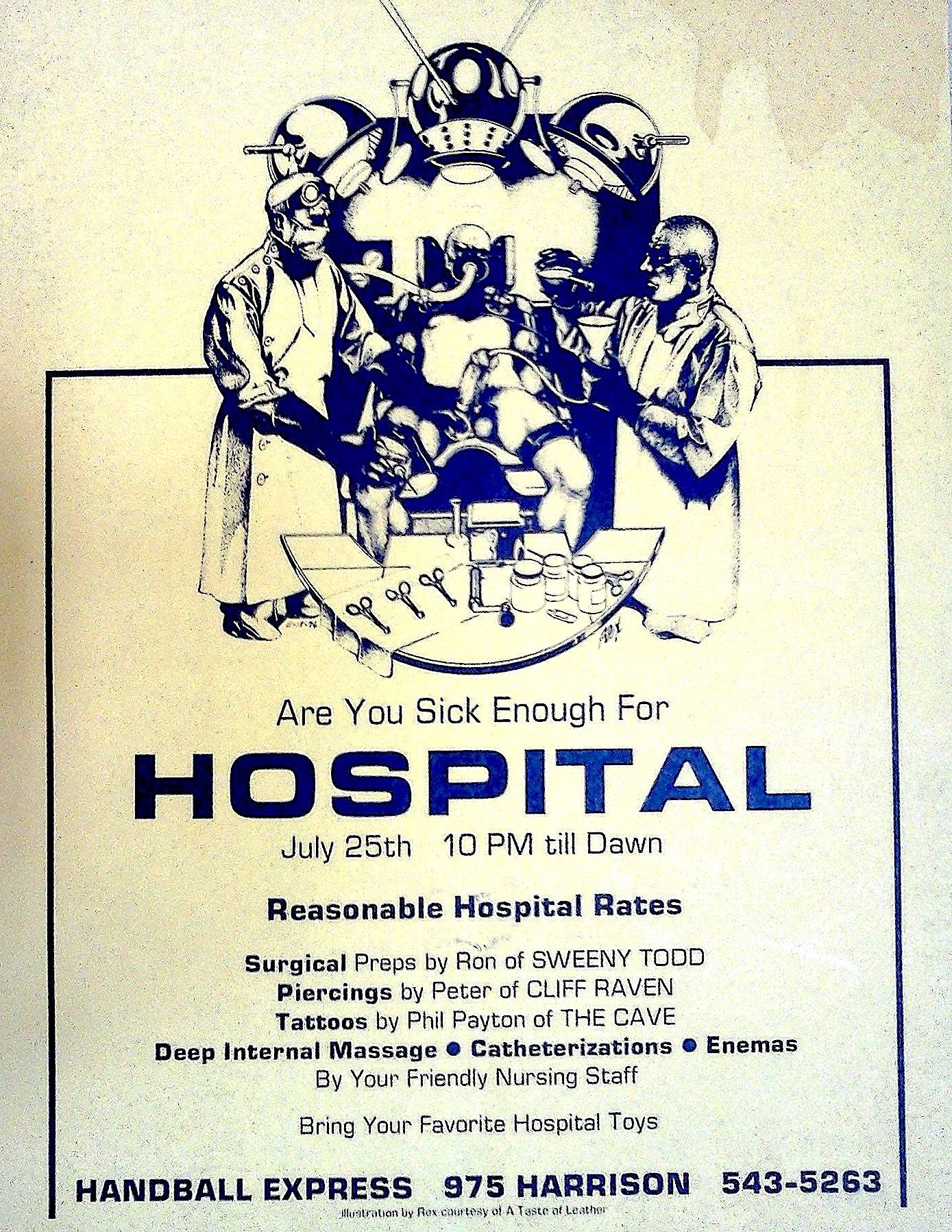
Handball Express (San Francisco) theme sex party with the come-on "Are you sick enough for HOSPITAL" in 1981--the same year as the first reporting on the emergent AIDS epidemic
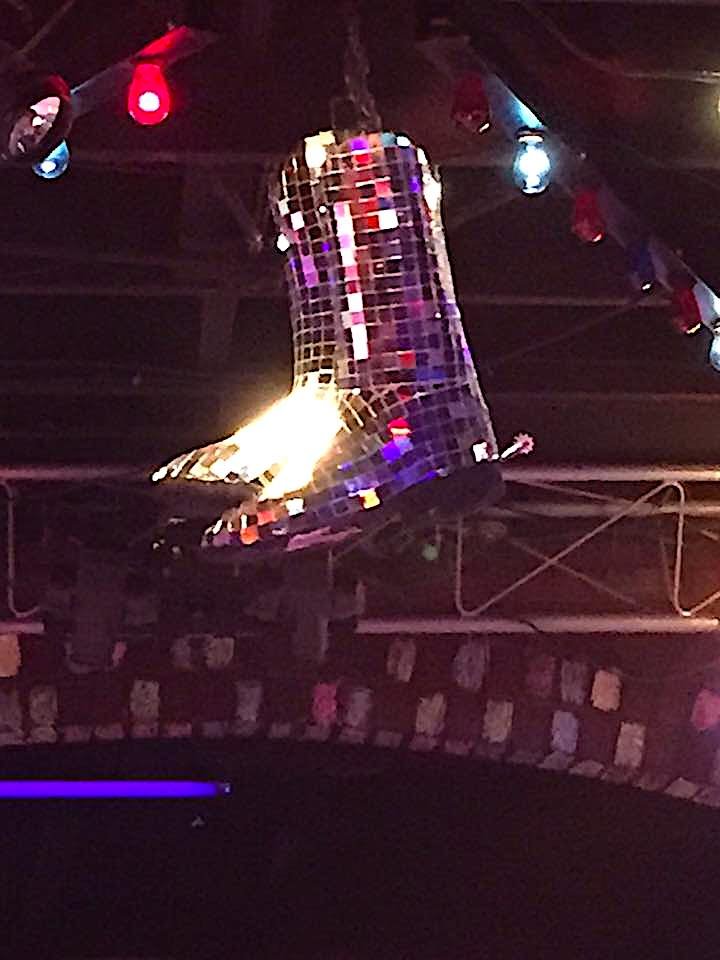
Disco boots over the dancefloor at Charlie's in Denver. Photo by author.

The exterior of Mable Peabody's Beauty Parlor and Chainsaw Repair in Denton, TX in 2017. Photo by author.

Shirley Temple ad for the Gold Coast, Chicago

"Glitter and be gay at Le Cafe" in Las Vegas. Matchbook.

"Have a Gay Day" trick card, interior of Le Cafe matchbook.

The EndUp, San Francisco, 1974

Interior neon sign, 19 Bar, Minneapolis

An ad for The Other Side, a Hollywood chicken bar, 1975. (Though it gets the wording of the joke wrong: Why did the chicken cross the road?)

Painting by Snowflake (book cover artist), 1989, on view at the Omaha Mining Company bar. Snowflake was influenced by a number of different painting styles and movements.
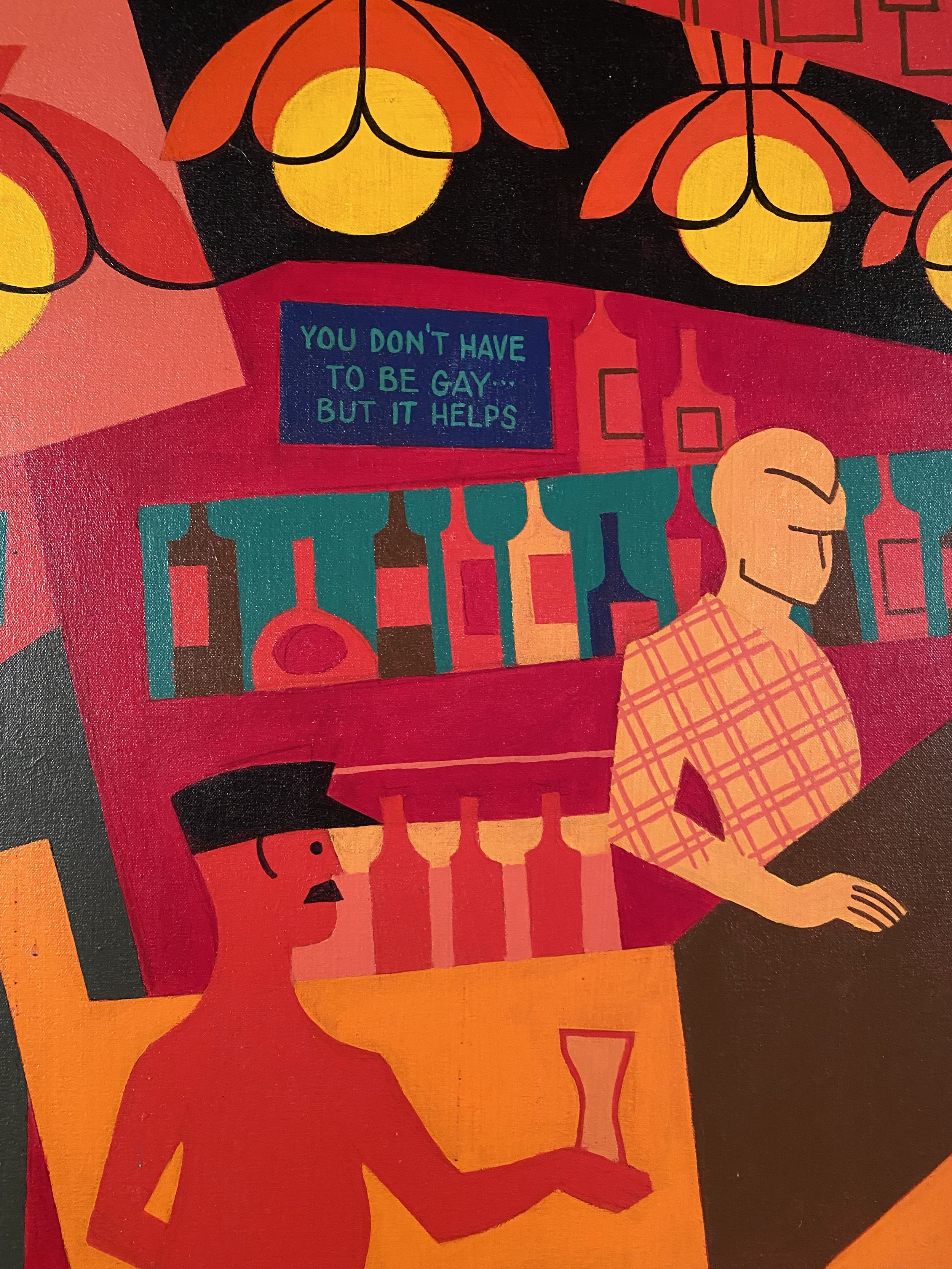
"You don't have to be gay ... but it helps." Detail of a painting by Snowflake (book cover artist), 1988, on view at the Omaha Mining Company bar
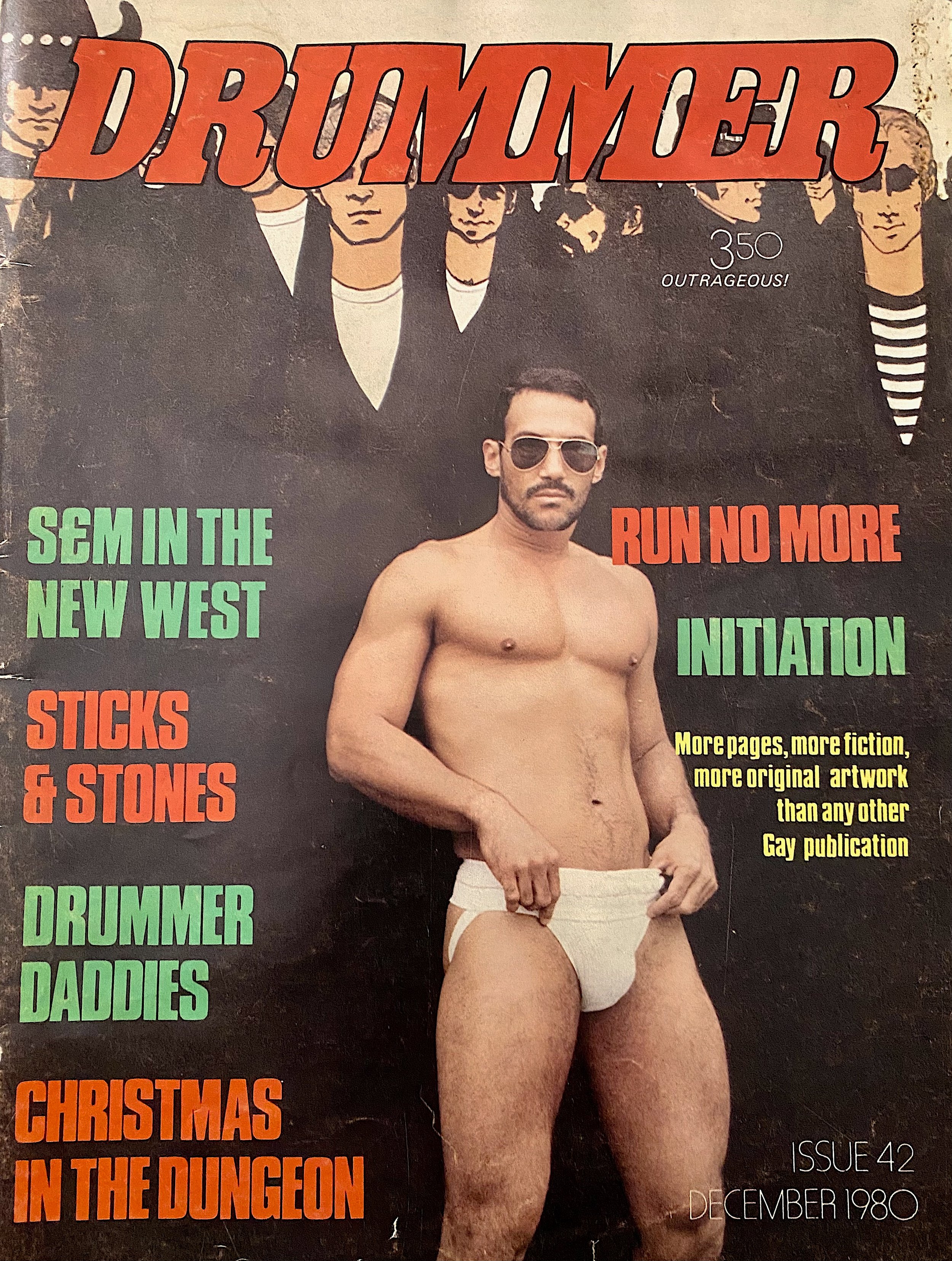
Drummer magazine cover photo, shot in front of the remains of Chuck Arnett's 1962 mural for the Tool Box in San Francisco; the bar had already been demolished, and this painting was publicly visible. The mural was famously featured in Life magazine's 1964 expose on "Homosexuality in America."
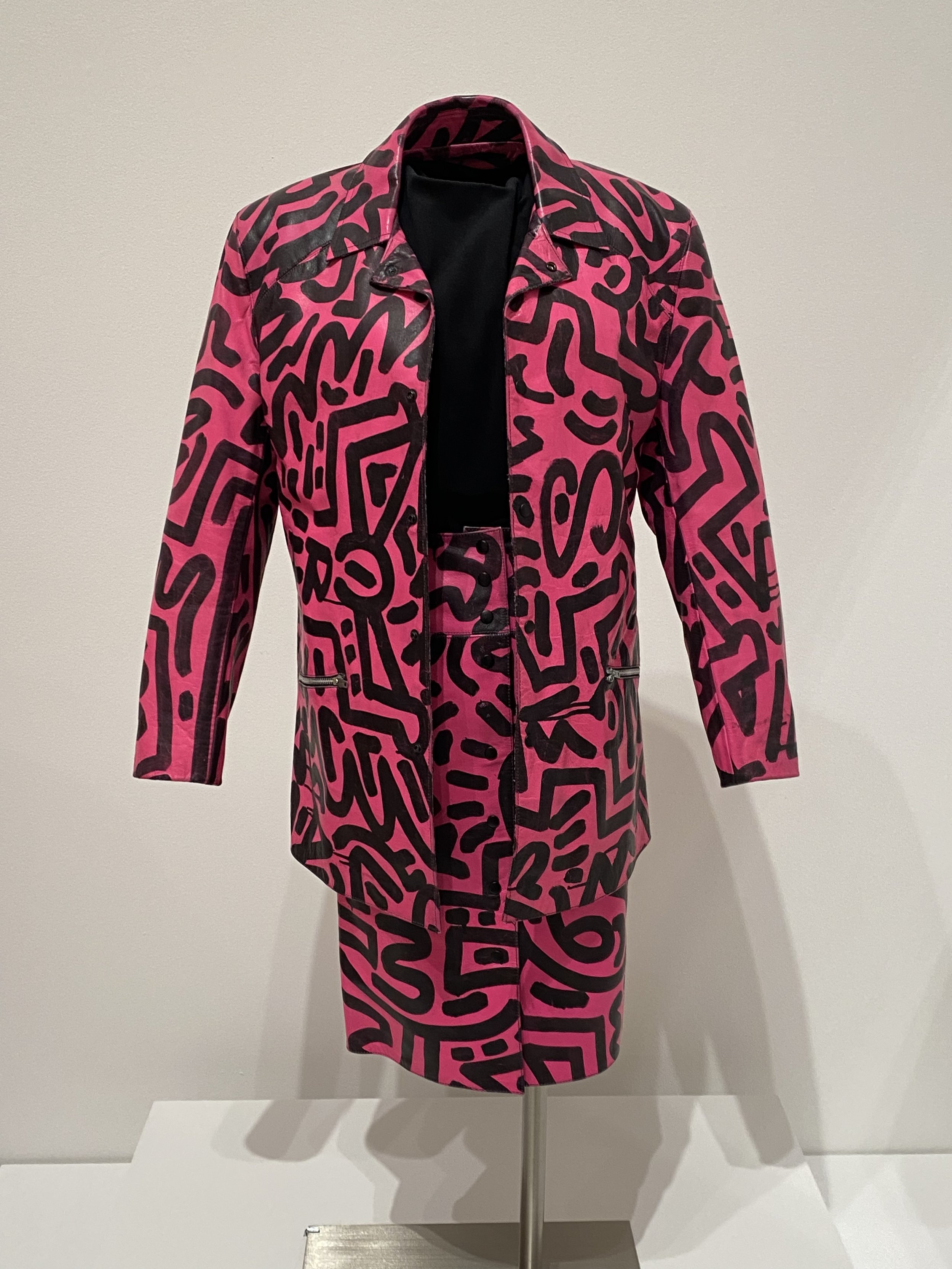
Keith Haring's hand-painted suit for Madonna's debut of "Like a Virgin" at the Paradise Garage, 1984. On view in the exhibition Keith Haring: Art is for Everybody at the Broad Museum in Los Angeles, 2023. Photo by author.

Meeting of two queens in a recurring dance night

"Ya know what I miss? "oh, Mary this" and "Oh, Mary that." That's what I miss! Comic by Gerard P. Donelan for The Advocate, repritned in Drawing the Gay Experience (1987)

"Le Fire Trap" ... The first appropriately named gay bar. Comic by Charles Ortleb and Ricahrd Fiala from Christopher Street, reprinted in Relax! This Book is Only a Phase You're Going Through (1978)
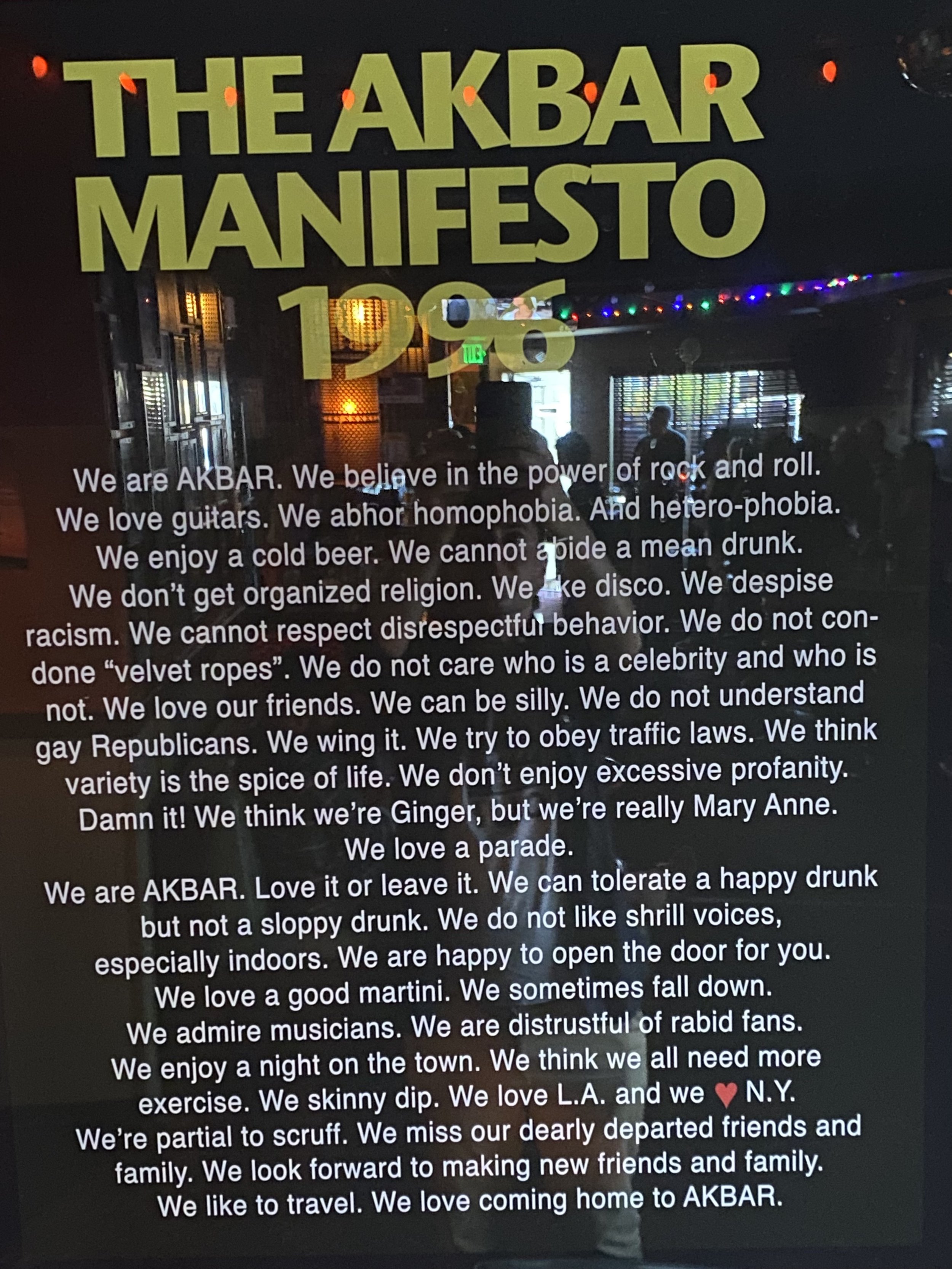
The Akbar Manifesto, 1996 (Silver Lake, Los Angeles, my home bar)

The original version of Scott Swoveland's Mary's mural, visible 1997-2006

7-inch/45rpm single of Juan Gabriel's "El Noa Noa," the source for the title of the Los Angeles chapter. Found in Guanajuato record shop.

Mexican edition of Lime's "Babe, We're Gonna Love Tonight" 12-inch single. The track was popular at Circus Disco. Found in Mexico City record shop.

Flyer for The Box, Page Hodel's dance party, San Francisco, 1988

Flyer for closing night of The Box, Page Hodel's dance party, San Francisco, 1999

Backstreet Atlanta ad in After Dark magazine, Nov 1976

2008 historical landmark marker for 1967 Black Cat raid and protest in Silver Lake, Los Angeles
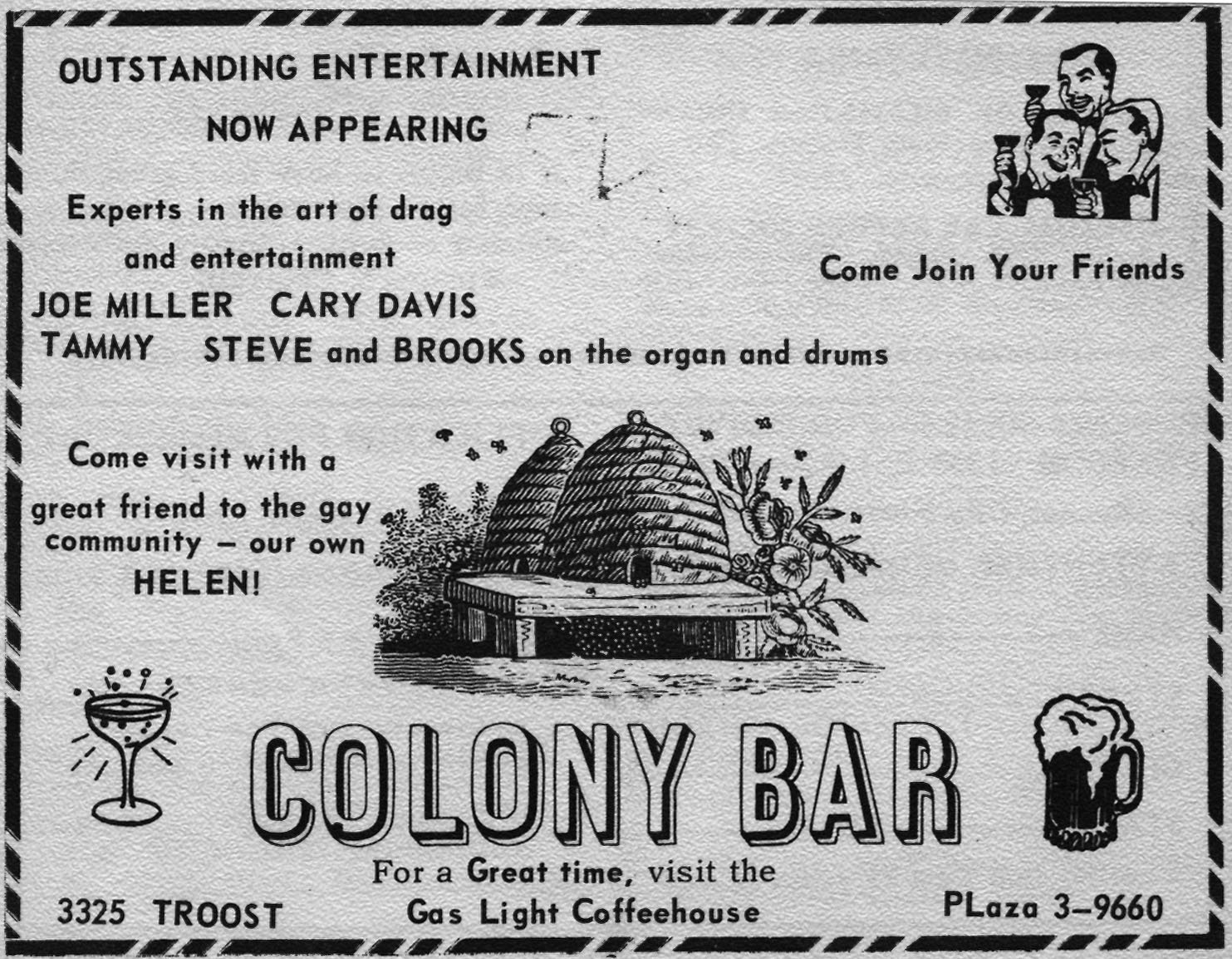
Colony Bar, Kansas City. Ad in the gay press, late 1960s. Note the use of "drag" instead of "female impersonation" and the social emphasis on "Your Friends" and "the gay community."
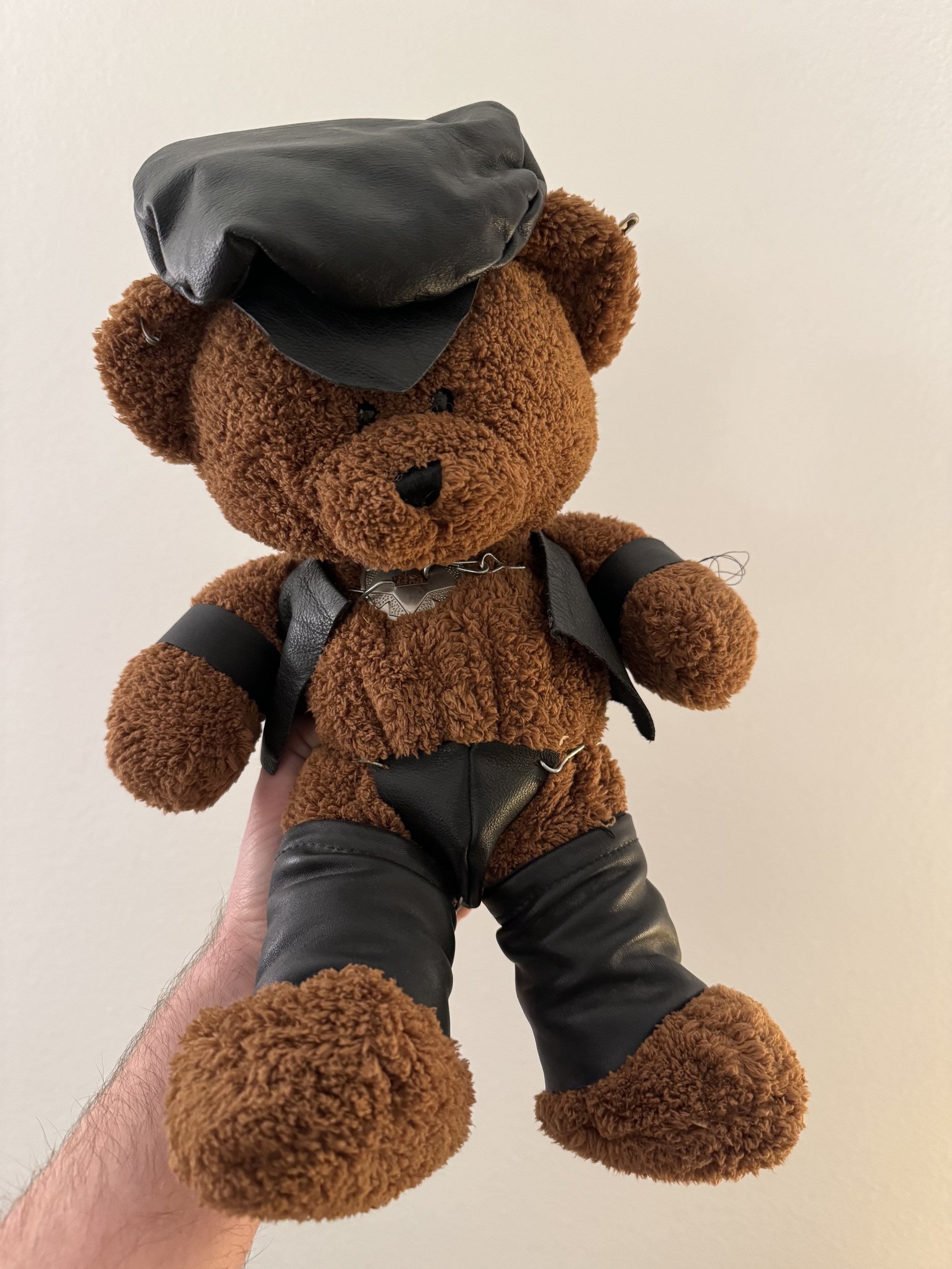
Leather teddy, made by Bob Jansen of the Main Club, Superior WI, 2011

The Mine Shaft Dress Code, New York, on display at the Leather Archives and Museum, Chicago
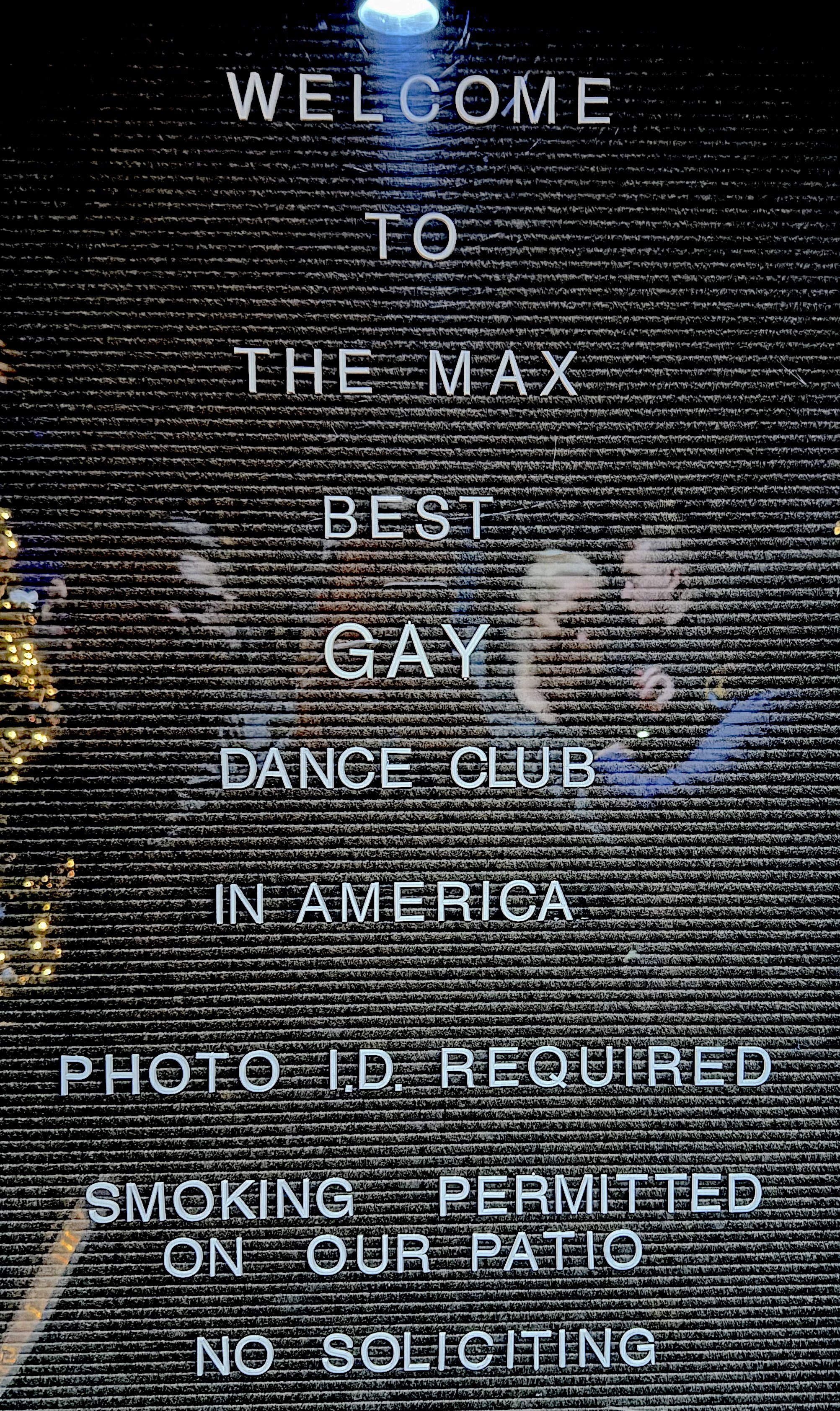
The Max in Omaha, the self-proclaimed best gay dance club in America, 2023

The Villa Fontana, aka "the Vile Fountain," was the self-proclaimed oldest gay bar in America, circa 1975. Ad in The Advocate.
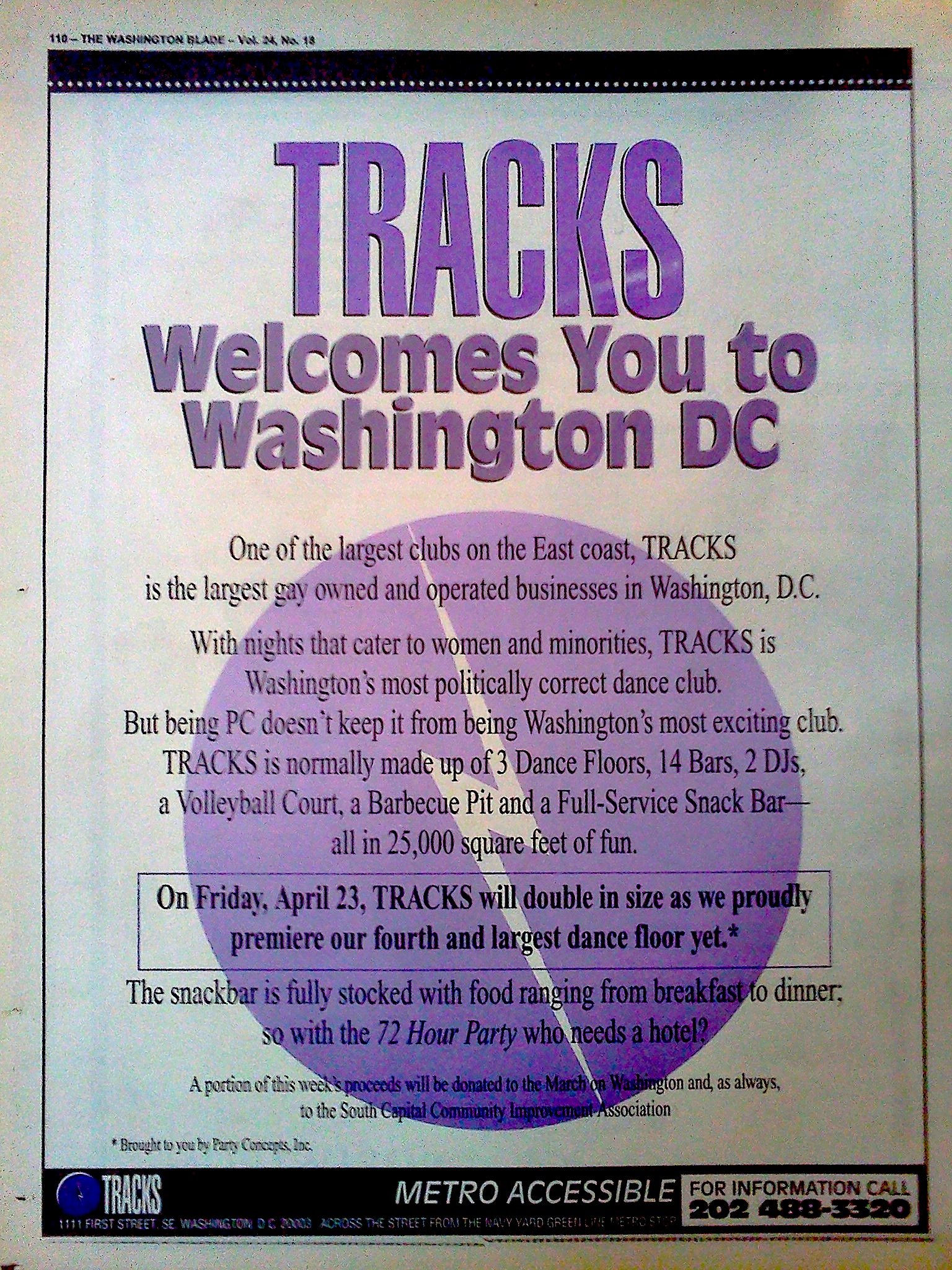
Tracks dance club in Washington, DC proclaimed itself Washington's "most politically correct" venue to party during the 1993 March on Washington. Ad in The Washington Blade.

Gay music as played at The Bushes, Chicago, 1991.

Ejection card. The Gangway, San Francisco. ONE Archives subject files.

The Lost and Found dance club in Washington DC declares that disco isn't extinct, circa 1988. Ad in The Washington Blade.

Chubby Chaser night at the New Flight, Chicago, 1978

Video dating as an alternative to cruising the bars. Club Alternative. Ad in The Advocate, 1977.

Cathode Ray, a mid-1980s video bar in Ft. Lauderdale. Ad in The Advocate.

This ad for The Club, "A Man's Bar," in Los Angeles appeared on the back cover of the early gay travel guide The Lavender Baedecker, 1963. By this time, motorcycle club/leather bars were a recognizable type of venue with distinct iconography and codes of masculinity.

This 1965 ad for the Golden Cask reflects insider knowledge: readers were assumed to already know who Michelle was and where the bar was located. Michelle was a drag hostess on the scene, who had a decades-long career. She celebrated a 20th anniversary as hostess in 1975 and was still emceeing in 1985. Ad in Vector, August 1965.
Table of Contents
Preface: Drunk History, or I Just Wanna Hear a Good Beat
Acknowledgments: I Feel Love/Can’t Get You Out of My Head
Introduction: We Were Never Being Boring
Part I. Cultures
1. Nights in Black Leather: Inventing a Bar Culture in Chicago
Interlude 1. Triangle Lounge in Denver
2. Show Me Love: Female Impersonation and Drag in Kansas City
Interlude 2. Safe Spaces in Detroit
Part II. Politics
3. Somewhere There’s a Place for Us: Urban Renewal, Gentrification, and Class Conflicts in Boston
Interlude 3. Seattle Counseling Service
4. Midtown Goddam: Discrimination, Coalition, and Community in Atlanta
Interlude 4. Gay Switchboard in Philadelphia
Part III. Institutions
5. Welcome to the Pleasuredome: Legends of Sex and Dancing in New York
Interlude 5. The Saloon in Minneapolis
6. Proud Mary’s: An Institution in Houston
Interlude 6. The Main Club in Superior, WI
Part IV. Reinventions
7. Further Tales of the City: Queer Parties in Post-disco San Francisco
Interlude 7. The Casa Nova in Somerset County, PA
8. Donde Todo es Diferente: Queer Latinx Nightlife in Los Angeles / Researched and Written with Dan Bustillo
Interlude 8. Mable Peabody’s Beauty Parlor and Chainsaw Repair in Denton, TX
After Hours. Pulse in Orlando
Appendix 1. Selected Bars and Clubs
Appendix 2. LGBTQ+ Periodicals
Notes
Bibliography
Index

